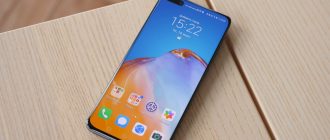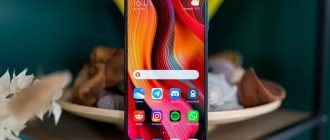Very often we are asked - which smartphone has the best camera now? We answer: in fact, putting a good flagship camera into the device is half the battle, the second half is software in order to squeeze the maximum out of this heaped camera. We present a rating of the best camera phones in the flagship segment, as well as smartphones under 20,000 rubles. We decide on the main characteristics of the type of matrix and optics.
Choosing a camera phone is not an easy task, because each manufacturer has some proprietary technologies. Even if a smartphone is equipped with a multi-pixel camera, this does not necessarily guarantee that it is capable of taking decent pictures. The flagship devices are simpler - they are expensive, the highest quality is due to their status. It is much more difficult to find a decent “photographer” among middle class devices, and even state employees. Fortunately, Google has obliged all smartphone manufacturers to support the Camera2 API (for Android OS 10 and older), and now everyone can squeeze the maximum out of the camera. Based on customer reviews, the ranking lists several models with the best photographic capabilities.
Go straight to the rating of smartphones with a good camera =>
How to choose a good product
Everyone strives to save as many shots from their personal life as possible - this will help the "pocket assistant" in the form of a smartphone. If the focus is on the camera, the following technical parameters must be considered:
- The matrix. This is the name of the sensor, which, through the optics, perceives the image and transmits it to the processor, which, in turn, stores the finished image in the device's memory. It is not necessary to consider the subtleties of this module, it is easier to remember the numbers. For a cheap phone, the parameter should be at least 1/3 "(from 12 Mp), for a middle class - 1 / 2.9" or 1 / 2.8 ", for a flagship - at least 1 / 2.8";
- Optics. This is the general name of the lens and it is important here what the lenses are made of, what their geometry and alignment are. An ordinary user cannot check the quality of optics, therefore, one has to trust the manufacturer. Moreover, many companies are now collaborating with photo brands, for example, Leica. Optics are denoted by the letter "f", the wider it is, the more light falls on it (on f / 2.4 flagships);
- Sensor. The resolution of the images and the sensitivity of the camera depend on it. It is a mistake to believe that the more megapixels, the better the picture. For good photos, 12 - 16 megapixels are enough. At the same time, larger pixels transmit information more accurately (minimum - 1.12 microns, average level - 1.25, high - from 1.4;
- Image stabilization. OIS technology is designed to cushion the device's camera. That is, the photo module does not shake during shooting, but moves smoothly, being held by magnets. Optical stabilization is needed for smooth video recording and high-quality shooting, it also allows you to increase the shutter speed;
- Battery capacity. To predict the approximate autonomy of a smartphone, you need to know what display and processor it has - these 2 nodes are the most "power hungry". However, a 4000 mAh battery is sufficient for the camera phone.
Which camera phone manufacturer is the best?
The rating of companies is built taking into account the traffic generated by their smartphones on the network:
- Samsung... South Korean tech giant that produces about 300 million devices a year. The assortment includes phones of any class, from budget to flagships and more expensive models (with a folding screen). Smartphones of this brand in 2020 generate almost a third of traffic - 30%;
- Apple. "Cupertinos" were predicted a collapse and many problems, but this did not stop their devices from generating almost 27% of traffic in 2020. At the height of the pandemic, the figure rose to almost 29% - what else to do during quarantine, how not to surf the net. The success of the company was consolidated by the successful base model of the iPhone 11;
- Huawei. One of the most popular brands in Russia, with sales of 10.39%. The Chinese firm has overtaken Samsung at one time, starting to develop 5G networks around the world. But she was "pressed" and imposed with sanctions. However, Huawei has a lot to offer, and somewhere it has overtaken the competition. For example, the P40 has a larger camera sensor than the Samsung Galaxy S20 Ultra (an important parameter for high-quality shooting);
- Xiaomi. A Chinese company that accounts for 8.36% of traffic. The list of smartphones includes flagships, camera phones, gaming devices and budget (a whole line, with good characteristics). In the second half of the year, Xiaomi has planned to release a new flagship photo with a 144 megapixel sensor and 12x zoom.
The network contains statistics of the analytical company StatCounter - this will be the full version of the rating of manufacturers.
We have already written about:
Flagships with the best cameras
From the wiktionary it follows that "flagship" is "the main leader in its industry." In terms of smartphones, this is the most advanced device from the manufacturer, packed with all sorts of functions and top-end hardware.
Apple iPhone 11 Pro Max - the smartphone with the best camera
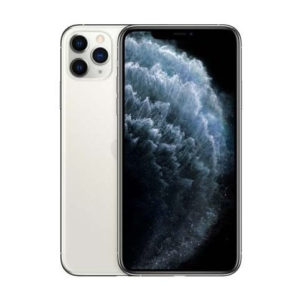
Apple iPhone 11 Pro Max is recognized as the best camera phone for October 2020. There are 3 rear cameras: wide-angle, ultra-wide-angle and telephoto. If we consider the characteristics of the module, then Apple has long reached the ceiling - you can't do better now, but you can improve the software (digital image enhancement).
The main innovation is the night mode. Those who are accustomed to working with photographic equipment in manual mode will not see anything new, but the owner of the smartphone will be surprised with the words “finally, the phone's camera shoots well at night”. The quality remained the same, but the system began to pay more attention to exposure, curves and saturation.
According to laboratory tests, the TV module is 10% better than in the iPhone XS model. The sensor is almost silent, the lens does not wash. At the same time, the characteristics practically did not change: the diagonal of the sensor is 1 / 3.4 ”, the aperture is f / 2.0 (it was 2.4).
The camera of the iPhone 11 Pro Max provides a decent picture in the dark, which was previously inaccessible to smartphones. This is partly a programmatic merit - the same result can be achieved by editing a photo in the same Photoshop. But every cameraphone owner wants the image to be already beautiful - with this, the Cupertinians succeeded.
HUAWEI P40 Pro - a smartphone with maximum zoom
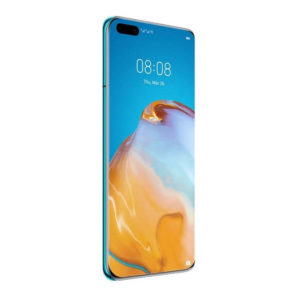
The deserved second place among the flagship models goes to HUAWEI P40 Pro with its stunning photos. The Chinese brand is sure to endow the flagship models with interesting photo opportunities. This model boasts 5x optical, 10x digital and 50x maximum zoom. As for the sensors, there are 4 of them: the main module of 50 Mp (1 / 1.28 ", optical stabilization), ultra-wide (40 Mp, 1 / 1.54"), a telephoto lens (12 Mp) and a module that measures the depth of the scene. The camera manufacturer is Leica.
The main camera works according to the following principle: it combines 4 pixels into one, which results in a picture with good sharpness and color reproduction. By the way, "shirik" shoots much better in comparison with the main module (the latter produces bright and unnatural frames, regardless of software processing).
There are no complaints about the telephoto operation, as well as about video filming. The device shoots in 4K at 60 fps (here, to the merits, it is worth adding support for optical stabilization). In this case, 4K video recording can be carried out even from the front camera.
Samsung Galaxy S20 Ultra
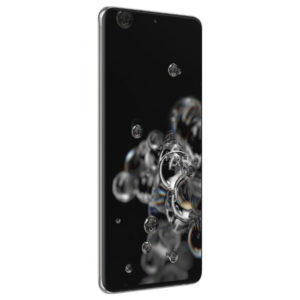
Samsung Galaxy S20 Ultra - Takes amazing pictures and videos, but pricey. In terms of design, the flagship has not brought anything new, but it has serious photo and video capabilities. There are 4 cameras in the apparatus: wide-angle, ultra-wide-angle lens, telephoto lens and time-of-flight module. The user can choose the shooting mode, and then one separate camera works or they work together. It is also worth noting the improved work of AI, thanks to which the smartphone learned to shoot in 8K and combine not 4, but 9 pixels together. The highlight is the 100x zoom.
Compared to the previous flagships of the company, in which almost the same matrices stood for a long time, the Galaxy S20 Ultra has gone far ahead. The camera software has not visually changed, but new features have been added, for example, automatic shooting with the subsequent selection of the best shots.
As for the quality of shooting, specialists from South Korea have significantly improved the night mode, zoom and 108-megapixel mode (it gives the best results during the day).
In terms of video recording, there is also something to pay attention to: enhanced stabilization, 4K with 60 fps, bokeh effect for video (main and selfie cameras). As for video shooting in 8K, it's too early to say. Firstly, the files turn out to be heavy and take up a lot of memory, and secondly, to see the difference between 4K, you need to watch the video on an 8K display.
Honor V30 Pro - Best Price / Quality Camera Phone
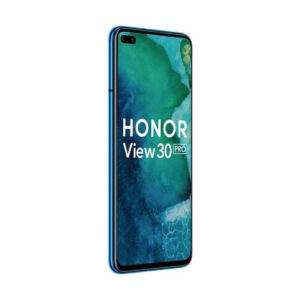
Who's really not ashamed of is the Honor V30 Pro smartphone - incredibly high-quality pictures and very tasty, one might say a dainty price. The winner in the price-quality category. For that kind of money, they "crammed" so many fillings that you never dreamed of. The sensor installed in this model is Sony IMX700, providing a resolution of 40 megapixels and an aperture of f / 1.6. Of the flagship features, it is worth highlighting: laser autofocus, dual flash and scene recognition (AI). The resolution of the second module, which is wide-angle, is 16 megapixels (f / 2.2). The third 8MP camera is used for 5x optical zoom. The periscope module is equipped with optical stabilization, so when filming, even at the moment of approaching, the picture does not shake.
A few words about the front camera: it is double, 32 Mp (f / 2.0) + 8 Mp (f / 2.2). For those who find the frame not beautiful enough, the manufacturer left the beautification mode.
There is also a night mode, which increases sharpness, detail and exposure - the frame seems to be illuminated.
The camcorder operates in 4K at 30 fps (with stabilization). The user can record slow motion videos at 960 fps, and if you add f / 1.6 aperture here, the quality remains high even with a lack of light.
Xiaomi Mi 10 8 / 128GB
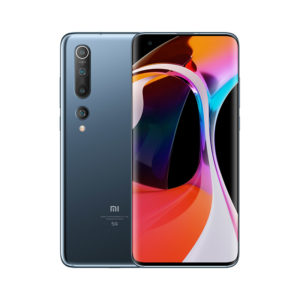
The Xiaomi Mi 10 smartphone has a 4-module main camera. The main module has a resolution of 108 Mp (1 / 1.33 ”sensor). The user can apply the "Quad Bayer" filter, which will increase the pixel size from 0.8 microns to 1.6 microns (while reducing the resolution to 27 megapixels). The aperture of the main module supporting optical stabilization is f / 1.69.
One of the features of this device, in comparison with the previous ones, is 2 telephoto lenses. One - short, 12 megapixel, with a 1 / 2.6 ”sensor, f / 2 aperture and 2x optical zoom. The second is a long, 4 times larger image than the main module. It is equipped with optical stabilization, a resolution of 12 megapixels and has an aperture of f / 2. 4th module - 20 Mp wide-angle (1 / 2.8 ", f / 2.2).
Selfie camera resolution - 32 megapixels, but the module is not equipped with stabilization.
The main camera of the flagship, according to experts, shoots practically without noise, correctly calculates exposure and white balance, realistically blurs the background and provides high details at different zoom levels. It was not without a fly in the ointment: the novelty periodically makes mistakes when focusing on faces, and under certain shooting conditions, red predominates in the frame.
Video recording capabilities - 8K @ 30 fps (good stabilization, fast focusing).
Smartphones with the best cameras up to 30,000 rubles
A couple of years ago, for this money, you could buy a flagship model. Now 30,000 rubles are for middle class devices. Yes, in terms of technical stuffing they are weaker, but you can choose a camera phone in this category.
Xiaomi Poco F2 Pro 6 / 128GB - the killer of classmates
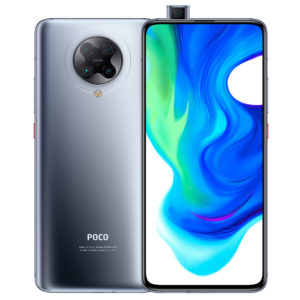
The best camera phone among classmates. Yes, the price is a little over 30, but it's worth it. In addition to the main 64 megapixel camera, the model is equipped with a wide-angle (20 megapixel, autofocus), telephoto lens (5 megapixel, 5x optical zoom), portrait module (12 megapixel, 2x zoom) and a 2 megapixel macro camera.
The 64 megapixel module is manufactured by Samsung. Pixel size - 0.8 microns, aperture - f / 1.69. It is equipped with optical stabilization, which will help out when there is a lack of light and night shooting. In standard mode, the phone shoots with a resolution of 27 megapixels (64 megapixels is enabled in the camera menu, but when switched, HDR and AI are deactivated). If you look at the computer monitor, the 27 megapixel image looks better than the 108 megapixel (the difference is visible only when zooming in - the detail is higher, the noise is less). In general, the photos come out sharp with a lot of detail. But when there is a lack of light, the camera increases the shutter speed, which blurs fast-moving objects.
A good panorama can be made on the wide-angle module, but autofocus does not always work properly. But with the 5x zoom everything is fine (thanks to optical stabilization).
In terms of video shooting, the device can work with 8K at 60 fps. There is a slow motion function (960 fps). There are no complaints about the quality - the stabilization is so clear that you can do without a steadicam.
HUAWEI Nova 5T
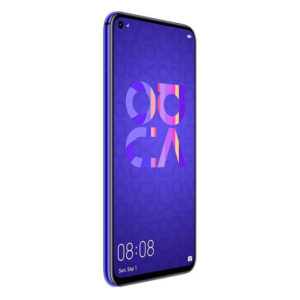
The HUAWEI Nova 5T smartphone is equipped with a quad module: a 48MP main camera, a 16MP (117 degrees) wide-angle camera, a depth sensor and a macro camera, both 2MP. When Auto is selected, AI picks the shooting options: adjusts color, brightness and contrast.
By default, the main camera shoots at 12 megapixels, combining 4 pixels into 1. In terms of quality, it is average when compared to flagships, and the 48 megapixel mode does not save (only increases the file size). The smartphone is not equipped with optical zoom, but at 12 megapixel mode, the user has access to 10x digital zoom.
In general, the phone shoots well during the day and bad at night. The shots are detailed, but the camera is sensitive to light, which leads to image distortion.
The wide-angle module is inferior in quality to the main one, but it allows you to fit more details into the frame. There is no focusing, but there is auto-correction of distortion.
Video filming is carried out in 4K 30 fps. The quality is above average, but far from ideal, since there is no optical stabilization. The zoom is digital here, and it is better not to use it - the image quickly loses in detail.
Selfie camera resolution - 32 megapixels. There is a possibility of gesture control, AI mode, various beautifiers.
Best smartphones with good cameras under 20,000 rubles
Not everyone is ready to spend 60,000 rubles, or even more, on flagship models. Even if you have three times less than the amount, you can find a phone with good photo and video capabilities, which will not lose its relevance for the next 3 - 4 years. Fortunately, manufacturers are squeezing the maximum out of budget sensors.
Xiaomi Mi 9T
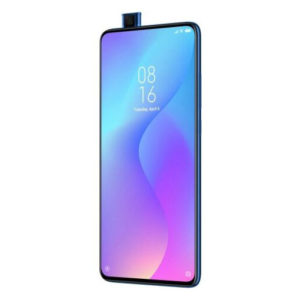
The main camera includes 3 modules. The main one is at 48 megapixels, with fast and adequate phase detection autofocus, but without optical stabilization. The second is a 13MP wide-angle module capable of correcting optical distortion. In general, it was possible to do without it, for the reason that, although panoramas are obtained, they look very soapy on the sides. The third module is 8 MP, with 2x optical zoom, which is not inferior in quality to the main one.
With standard settings, the main camera shoots at 12 megapixels (48 switches through the menu). In both cases, the frame is detailed, but slightly noisy. There is also artificial intelligence in the phone, which recognizes scenes and selects the optimal parameters for them (switchable).
The selfie camera in Xiaomi Mi 9T is retractable, which does not require space on the front surface. Resolution - 20 megapixels.
In general, the phone shoots well during the day, but at night the lack of lighting affects. The color rendition is adequate, despite the fact that the device programmatically tries to make the picture brighter.
Video can be recorded at 4K 30 fps or 1080p 60 fps. The detail is good, the colors are more or less natural (slightly oversaturated). But autofocus does not always focus correctly, and if you do not help it, you can safely reshoot the video.
Xiaomi Redmi Note 8 Pro
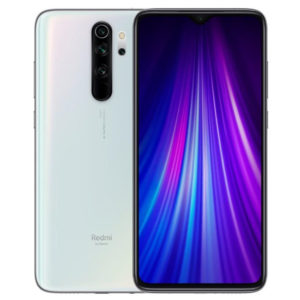
The model has 4 cameras, which is rarely found in smartphones in this price range. One lens determines depth, the other is used for macro photography. The main camera, with a Samsung lens - 64 megapixels, there is also an ultra-wide-angle one - 8 megapixels.
If you use the main lens, then by default it shoots at a resolution of 16 megapixels (in the settings it is selected at 64 - neighboring pixels merge into one). The higher the resolution, the more detailed the frame is, but this is noticeable only when viewed on a large screen, and then when zooming in. Camera functions: slow motion (960 fps), portrait, night mode, panorama. There is a set of filters, AI, HDR.
In short, there are plenty of opportunities. If you shoot during the day, in good lighting, the images are detailed, with good sharpness, natural, desaturated colors and good contrast. It is worth switching to the wide-angle, immediately noticeable decrease in detail, especially at the edges of the frame.
Video recording capabilities - 4K 30 fps or FullHD 60 fps. Electronic stabilization only works for the second mode.
HUAWEI P40 Lite 6 / 128GB
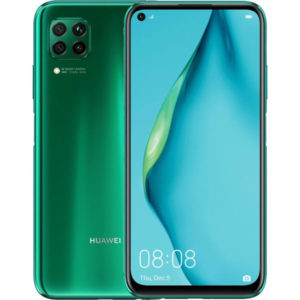
The rear camera of the device includes 3 modules: the main one is 48 megapixels (by default it works as 12 megapixels), the wide-angle one is 8 megapixels and the third one, which does not shoot, but measures the depth of field. Optical stabilization is not provided, but autofocus works quickly. There are many manual settings, HDR mode (for 12 MP), background blur.
In general, the photos are good (during the day), especially when you consider that the smartphone is positioned as inexpensive. But, in HUAWEI, apparently, this word is not interpreted that way, because there are devices that are cheaper, but with much better photographic capabilities. If it is detailed, the images lack detail, sharpness. The frames are a little blurry, the edges are in general trouble with sharpness. The colors seem to be adequate, but they lack juiciness. This phone is not suitable for night shooting.
The selfie camera is 25 megapixels (default is 12). During the day, you can take a good photo with it, but subject to good lighting (detail, sharpness, color rendition are normal).
The maximum video resolution is Full HD. The camcorder is not equipped with optical stabilization. At the same time, it shoots well, both during the day and at night (sharpness, detail are preserved, there is almost no noise).
Video: What kind of camera should a smartphone have?




